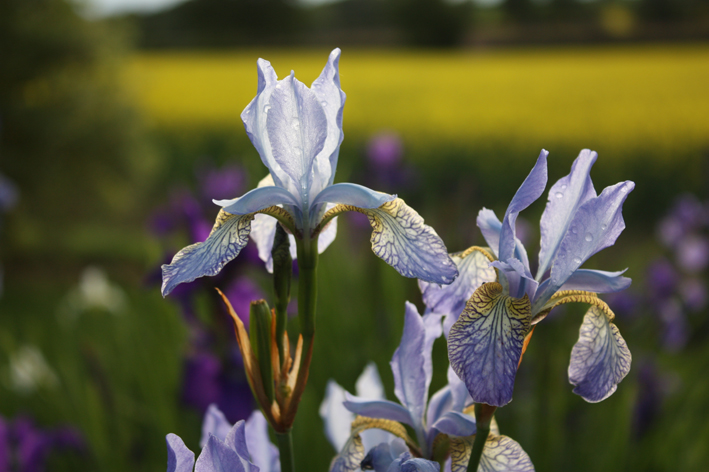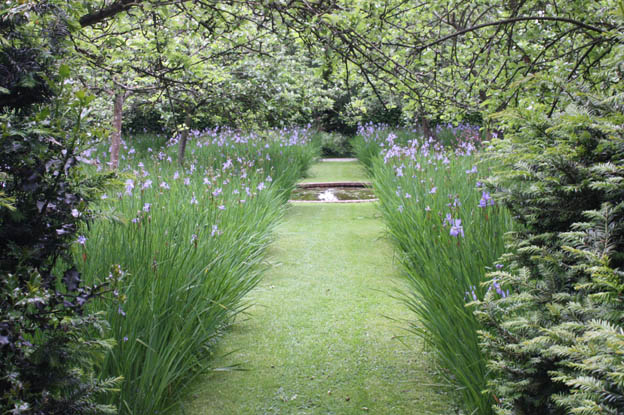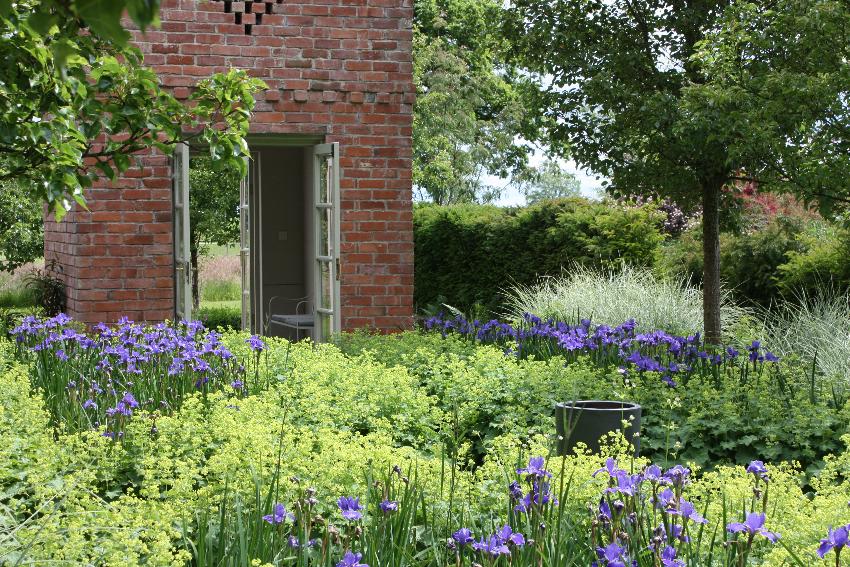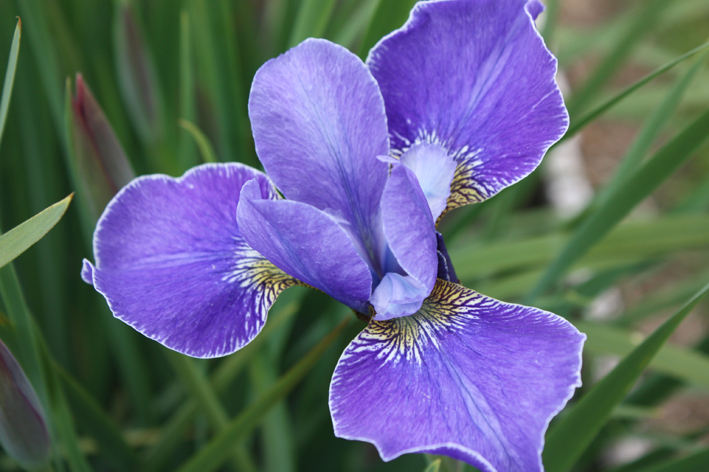Jill's Jots
Siberians in gardens
Siberian irises are more adaptable than people think. In the past they were considered to be ideal planting for around a pond and true enough they do look beautiful reflected in water, equally so they are more than happy in an herbaceous border. Of course they don't want arid conditions or a site which is permanently waterlogged but most conditions in-between are very suitable provided they are given a good start in life - but that applies to all plants! But have you ever thought about growing them en masse? I can think of two gardens where they are planted in this manner and both are most effective. Bryan's Ground, near Presteigne in Herefordshire uses them as an under planting to a grid of twenty-five apple trees. This orchard frames a crinkle-crankle shaped canal and the irises form large drifts with mown paths between. The variety they have chosen to use is 'Papillon', dating from 1923 and raised by William Rickatson Dykes. Dykes was the foremost authority on iris and his publication The Iris is still highly regarded today. 'Papillon', from the Latin papilio - butterfly, is a pale to mid-blue with pronounced veining and the flowers do seem to flutter in the slightest breeze.


Visiting Bryan's Ground when the irises are in flower is a breathtaking sight, the sea of blue against the backdrop of the ochre painted house is almost like a scene from Provence. David Wheeler and Simon Dorrell who own Bryan's Ground have enhanced the planting with pheasant's eye narcissus in the spring, the seed heads of the iris growing through the meadow grasses make a real feature through to the autumn. They have recently built a timber frame gate house, in arts and crafts style, as is the house, which leads the eye brilliantly through this planting. The garden is very art-directed and it is obvious that Simon, as an artist is behind many of the follies that adorn the garden.


The other garden is Rhodds Farm again in Herefordshire owned by Cary and Richard Goode. The garden was started in 2005, so is relatively new and extends to some two acres. A dovecote based on a design echoing the Victorian barn was added in 2007 and to the north of this there are four large rectangular beds edge with Alchemilla mollis and filled with Iris 'Silver Edge'. The blue of the iris being enhanced by the acid yellow of the Alchemilla or ladies mantle. Ornamental pears are used to frame and these are under planted with Miscanthus 'Morning Light' and Anemone hybrida 'Honorine Jobert'. The effect of the whole is delightful even when the irises are not in flower but especially when they are! Again, a building is used as eye-catcher, this time it is the dovecote which, because it has doors on both sides, allows a view through in two directions. It is home to a flock of white doves who create a sense of movement as they flit around the garden. Box edged beds are planted with a goodly number of late summer stars, including Crocosmia, so there is interest throughout the seasons. There is also a natural woodland with drifts of bluebells in spring and a large wildlife pool. 'Silver Edge' was raised by Currier McEwen in 1973. Currier was an American author, prolific hybridiser and his work dramatically changed the beardless iris world. His achievements include the introduction of the first yellow Siberian iris and the first tetraploid Siberians.
We grow both 'Papillon' and 'Silver Edge' within our Collection of over 150 cultivars of Siberian iris. Both are good growers, 'Papillon' being one of the first to flower for us. But in case you are thinking that all Siberians are blue what about 'Humors of Whiskey', the 2015 Morgan-Wood award winning iris which is most definitely not blue!
